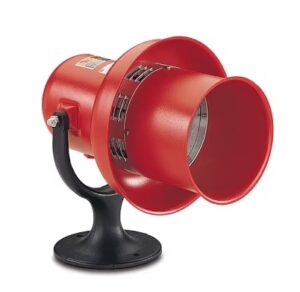To the average passerby, a drawbridge might seem like a simple piece of infrastructure. It goes up, it goes down, and traffic continues on its way. But behind the scenes, maintaining a drawbridge is a complex, demanding task that calls for a unique blend of skills. It’s not just about grease and gears; it’s about understanding the interplay of mechanical, electrical, structural, and operational systems and being ready to adapt when something goes wrong.
Drawbridges are among the most versatile and dynamic structures in any transportation network. Unlike a static overpass or a fixed span, a drawbridge is alive. Its moving, shifting and responding to both scheduled operations and unexpected demands. Successfully keeping one in service requires the kind of versatility that comes from both deep technical expertise and hands-on experience.
Whether you’re troubleshooting a motor fault, balancing a leaf, recalibrating limit switches, or managing marine traffic during an emergency lift, the work demands broad knowledge and sharp instincts. Let’s dig into what makes drawbridge maintenance such a multidisciplinary challenge and why the people who keep them working are far more than just mechanics…
At the heart of every drawbridge is its electrical system; the control panels, motors, sensors, and circuitry that orchestrate the bridge’s movements. These systems don’t just power the lift; they monitor its position, limit its motion, and ensure everything happens in the correct sequence. A faulty relay or a corroded contact can grind operations to a halt. And when problems arise, there’s often no time to wait for a specialist. You have to diagnose and fix it yourself, often in less-than-ideal conditions.
Bridge electricians must be comfortable working with high-voltage motor controls, programmable logic controllers (PLCs), backup power systems, and sometimes legacy components that have long outlived their original documentation. It’s part electrician, part detective, and entirely critical.
The mechanical side of drawbridge maintenance is just as demanding. These aren’t delicate machines; they’re lifting thousands of pounds of steel and concrete, often multiple times a day, sometimes in extreme weather. Gears, shafts, bearings, hydraulic rams, and counterweights all work together to raise and lower the span, and all of them are subject to wear.
Routine maintenance is essential to avoid catastrophic failures. Lubrication schedules, alignment checks, tension adjustments, it’s all about prolonging life and preserving safety. But even routine work can get tricky when you’re dealing with aging infrastructure, shifting tolerances, or parts that haven’t been manufactured in decades.
While the mechanical and electrical systems get most of the attention during a lift, the structure itself is the foundation everything depends on. Cracks in steel members, fatigue at pivot points, or corrosion hidden beneath paint can all spell disaster if left unchecked.
Bridge maintainers must be trained to spot early warning signs and understand the implications of what they see. Structural inspections aren’t just about checking boxes; they’re about reading the bridge like a story. Knowing how it behaves over time, how it responds to temperature shifts, loads, and even tides.
Finally, there’s the operational side; coordinating lifts, managing marine and vehicle traffic, ensuring safety systems function correctly, and dealing with unexpected issues in real time. A successful lift isn’t just mechanical, it’s also logistical. Communication with vessel operators, traffic control centers, emergency responders, and the public all play a role.
Operators must balance tight schedules, weather concerns, and human unpredictability. They’re often the first to notice when something sounds or feels “off,” making them the bridge’s first line of defense against bigger problems.
Maintaining a drawbridge isn’t just a job, it’s a craft. It demands the mind of an engineer, the hands of a mechanic, the instincts of an operator, and the judgment of someone who understands what’s at stake every time that span moves.
Versatility isn’t optional; it’s essential. The best drawbridge technicians don’t just know how things work… they understand why they work, when they fail, and how to keep them going in the face of pressure, time, and the elements.
So the next time you’re waiting at the gates, watching the span rise, take a moment to appreciate the quiet complexity behind the movement. Because what looks simple from the outside is, in reality, a finely tuned dance. One that only works thanks to people who know how to keep every part of it in balance.
